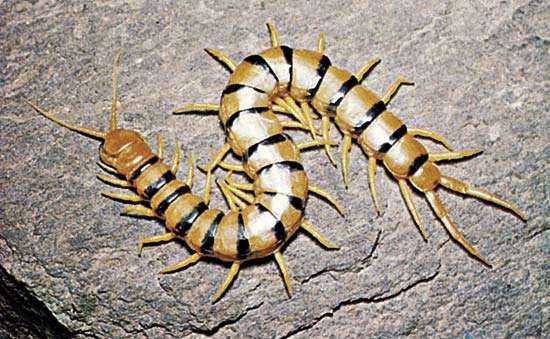| S.N. |
Centipedes |
Millipedes |
| 1. |
The body is dorso-ventrally flat. |
The body is cylindrical. |
| 2. |
The body is divided into two segments; head and trunk. |
The body is divided into three segments; head, thorax and abdomen. The split between thorax and abdomen, however, is not visually obvious. |
| 3. |
All segments are single. |
Thoracic segments are single whereas the abdominal segments are double. |
| 4. |
Antennae are long and tapering. |
Antennae are short and club shaped. |
| 5. |
There are two pairs of maxillae. |
There is only one pair of maxillae. |
| 6. |
Only one pair of legs are present per segment. |
One pair of legs per thoracic segment and two pairs of legs per abdominal segment are present. |
| 7. |
No apodal (without legs) segment in the body. |
The first and a few last segments are apodal. |
| 8. |
The legs arise laterally from each segment. |
Legs arise close to mid-ventral line. |
| 9. |
The first pair of legs are modified into poison claws. |
First pair of legs are just like other legs without poison claws. |
| 10. |
No stink glands are present and hence no foul smell. |
Stink glands are present. |
| 11. |
They run swiftly and are carnivorous. |
They walk slowly and are herbivorous or saprozoic. |
| 12. |
They may inflict a painful bite with the poison claws. |
They don’t harm animals but can damage tender plants. |
| 13. |
They don’t roll into a spiral structure when disturbed. |
They roll into a spiral structure when disturbed. |
| 14. |
 e.g. Scolopendra e.g. Scolopendra
|
 e.g. Julus e.g. Julus |

 e.g. Julus
e.g. Julus e.g. Scolopendra
e.g. Scolopendra